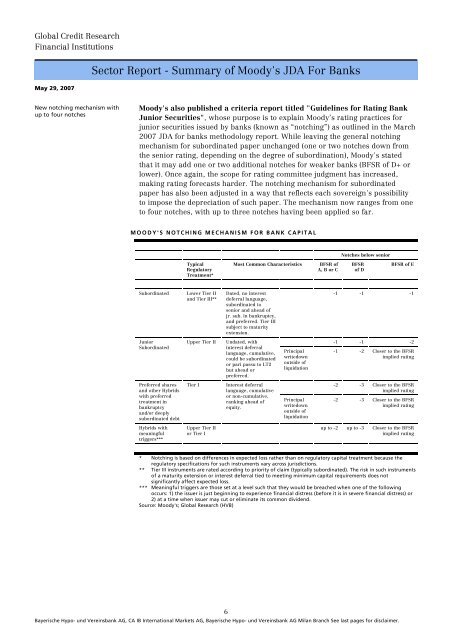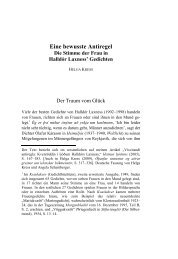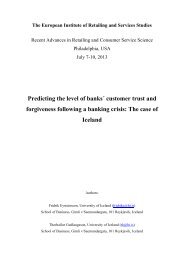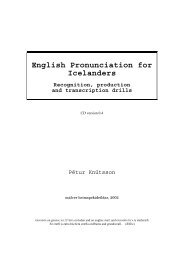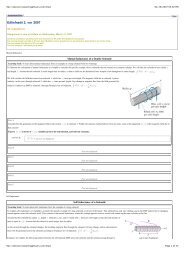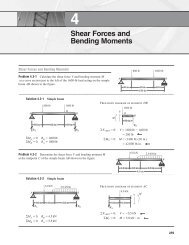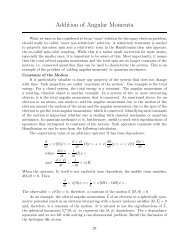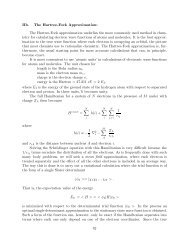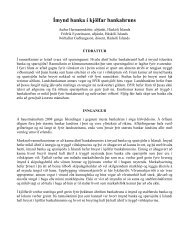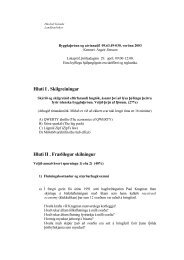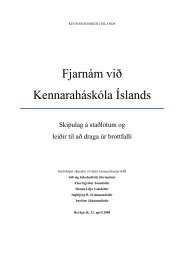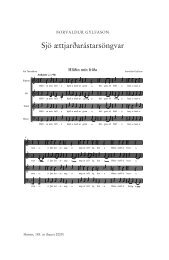summary of moody's jda for banks - Bad Request
summary of moody's jda for banks - Bad Request
summary of moody's jda for banks - Bad Request
You also want an ePaper? Increase the reach of your titles
YUMPU automatically turns print PDFs into web optimized ePapers that Google loves.
Global Credit Research<br />
Financial Institutions<br />
May 29, 2007<br />
New notching mechanism with<br />
up to four notches<br />
Sector Report - Summary <strong>of</strong> Moody's JDA For Banks<br />
Moody's also published a criteria report titled "Guidelines <strong>for</strong> Rating Bank<br />
Junior Securities", whose purpose is to explain Moody’s rating practices <strong>for</strong><br />
junior securities issued by <strong>banks</strong> (known as “notching”) as outlined in the March<br />
2007 JDA <strong>for</strong> <strong>banks</strong> methodology report. While leaving the general notching<br />
mechanism <strong>for</strong> subordinated paper unchanged (one or two notches down from<br />
the senior rating, depending on the degree <strong>of</strong> subordination), Moody's stated<br />
that it may add one or two additional notches <strong>for</strong> weaker <strong>banks</strong> (BFSR <strong>of</strong> D+ or<br />
lower). Once again, the scope <strong>for</strong> rating committee judgment has increased,<br />
making rating <strong>for</strong>ecasts harder. The notching mechanism <strong>for</strong> subordinated<br />
paper has also been adjusted in a way that reflects each sovereign's possibility<br />
to impose the depreciation <strong>of</strong> such paper. The mechanism now ranges from one<br />
to four notches, with up to three notches having been applied so far.<br />
MOODY'S NOTCHING MECHANISM FOR BANK CAPITAL<br />
Typical<br />
Regulatory<br />
Treatment*<br />
Subordinated Lower Tier II<br />
and Tier III**<br />
Junior<br />
Subordinated<br />
Preferred shares<br />
and other Hybrids<br />
with preferred<br />
treatment in<br />
bankruptcy<br />
and/or deeply<br />
subordinated debt<br />
Hybrids with<br />
meaningful<br />
triggers***<br />
Bayerische Hypo- und Vereinsbank AG, CA IB International Markets AG, Bayerische Hypo- und Vereinsbank AG Milan Branch See last pages <strong>for</strong> disclaimer.<br />
6<br />
Most Common Characteristics BFSR <strong>of</strong><br />
A, B or C<br />
Dated, no interest<br />
deferral language,<br />
subordinated to<br />
senior and ahead <strong>of</strong><br />
jr. sub. in bankruptcy,<br />
and preferred. Tier III<br />
subject to maturity<br />
extension.<br />
Upper Tier II Undated, with<br />
interest deferral<br />
language, cumulative,<br />
could be subordinated<br />
or pari passu to LT2<br />
but ahead or<br />
preferred.<br />
Tier I Interest deferral<br />
language, cumulative<br />
or non-cumulative,<br />
ranking ahead <strong>of</strong><br />
equity.<br />
Upper Tier II<br />
or Tier I<br />
Principal<br />
writedown<br />
outside <strong>of</strong><br />
liquidation<br />
Principal<br />
writedown<br />
outside <strong>of</strong><br />
liquidation<br />
Notches below senior<br />
BFSR<br />
<strong>of</strong> D<br />
BFSR <strong>of</strong> E<br />
-1 -1 -1<br />
-1 -1 -2<br />
-1 -2 Closer to the BFSR<br />
implied rating<br />
-2 -3 Closer to the BFSR<br />
implied rating<br />
-2 -3 Closer to the BFSR<br />
implied rating<br />
up to -2 up to -3 Closer to the BFSR<br />
implied rating<br />
* Notching is based on differences in expected loss rather than on regulatory capital treatment because the<br />
regulatory specifications <strong>for</strong> such instruments vary across jurisdictions.<br />
** Tier III instruments are rated according to priority <strong>of</strong> claim (typically subordinated). The risk in such instruments<br />
<strong>of</strong> a maturity extension or interest deferral tied to meeting minimum capital requirements does not<br />
significantly affect expected loss.<br />
*** Meaningful triggers are those set at a level such that they would be breached when one <strong>of</strong> the following<br />
occurs: 1) the issuer is just beginning to experience financial distress (be<strong>for</strong>e it is in severe financial distress) or<br />
2) at a time when issuer may cut or eliminate its common dividend.<br />
Source: Moody's; Global Research (HVB)


